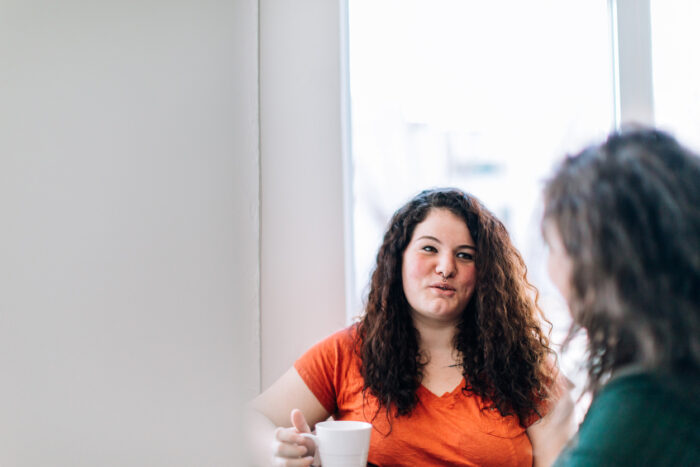A group agreement can be a great tool to bring your group together, creating shared values and building trust.
Section 4A: Running your peer support group – tools and tips
In this section we’ll explore practical tools and resources to help you run your group. Kinship carers will now be coming together regularly because you created the space.
Next steps - running your peer support group
So you’ve recently started a kinship peer support group. Or perhaps you’ve been running one for a while. Either way, Section 4 has been created to introduce some supportive structures and practices that might help your group.

Solid foundations for your peer support group
It’s important that your group is a strong and trusted space. Section 3 shared how to build trust in your group from the beginning, and how finding the right space to meet can make a big difference to your group.
To create a strong and supportive group, it’s worth spending time building some structures that bring the group together, and developing your skills as group leader to manage the group. If you get the right foundations in place, it sets the group up in the best way.
This section covers a lot, including:
- how a group agreement might be a useful tool for your group
- setting the expectations for everyone who joins
- and how you can make new group members feel welcome
You can use these tools at any stage of your group. Different situations or issues will come at different times, so you can check here for tips and advice, including how other group leaders may have handled certain situations.
You’re not on your own – sharing the load
It might feel lonely when you get started. Especially if no one comes to your first group meeting. But as more kinship carers start to come, they will become more involved and supportive to your role as group leader. Once group members are settled in, it’s also ok to ask for help and encourage more people to get involved. There are different ways others could help you:
- look after the refreshments – someone could be responsible for collecting contributions towards tea and coffee for the meetings or bringing the biscuits
- greet new group members – if someone is confident talking to others, they could help you meet and welcome new group members. Maybe sitting with them for their first meeting so the new member can ask questions quietly and feel supported
- send meeting reminders and updates to the group – some of the group admin jobs like reminder messages could be sent my someone else
- become a deputy group leader – it’s helpful to have someone to stand in and lead the group if you cannot make a meeting. This means the group doesn’t need to cancel a session
- help promote the group – to find more kinship carers to join the group, others can help to promote the group too. Perhaps across local schools, on community notice boards or in GP practices
Remember, it will take time to develop the group, there is no set timeline for when things will happen. So take your time and tackle one thing at a time.
"I think sometimes you've just got to do what you can with what you've got. And the rest will just develop naturally."

